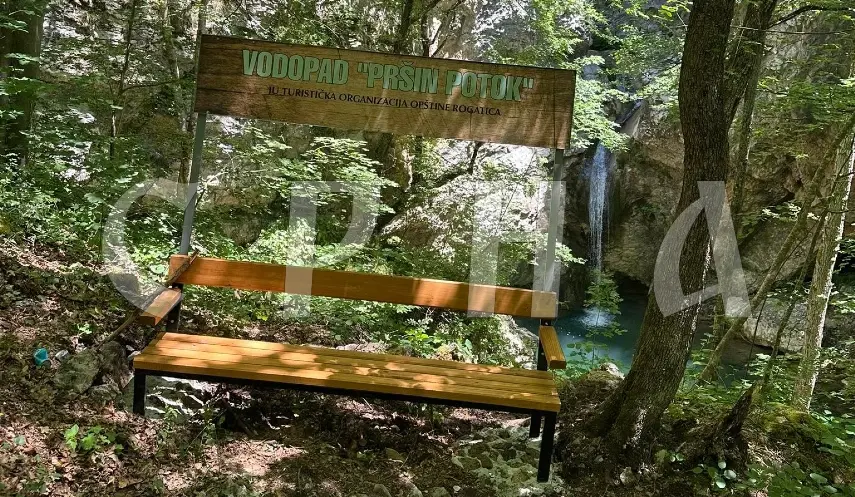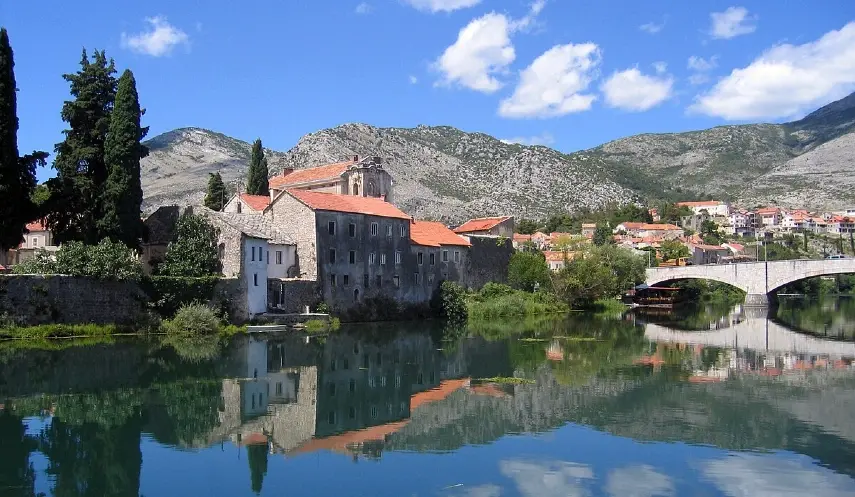PRAČA NATURE PARK, CAVES AND MEDIEVAL TOWNS
Republika Srpska - Rogatica - tourism /6/
09/04/2025
10:30

ROGATICA, SEPTEMBER 4 /SRNA/ - The area of municipality of Rogatica is worthwhile to visit, because it has natural treasures as the Prača Nature Park, where the cave Banja Stijena is located – the one of the most beautiful in Republika Srpska – but it also has a rich cultural-historical heritage from the Roman era, such as fragments of stone monuments, medieval tombstones and remains of medieval towns Vratar and Borač.
"Numerous endemic and relict species live in this protected area," director of the Rogatica Tourist Organization Predrag Ujić told SRNA.
According to the data from the group of speleologists from Bologna, who continued their research of cave Goveštica this summer, its canal is 9,682 meters long, and it is the longest one in BiH. This cave is also famous because the skeleton of pre-historic bear was found there.
"Entering in Goveštica is adjusted and recommended for experienced speleologists only," noted Ujić.
He pointed out that recently, lovers of nature are particularly attracted by the Pršin Potok waterfall, next to the Rogatica-Višegrad highway. The waterfall is made of several streams that go through the notch, which is two kilometers long. There is also the Bereg waterfall, in Rakitnica, that was made by merging the Rakitnica and Bereg rivers.
The municipal Tourist Organization, says Ujić, marked the Grabovača lookout for mountaineers and visitors on Starogorske Stijene, from where one could see the Drina Lake, lookout Baba at Boškanica, and from there one could see Višegrad and the surrounding area.
TOMBSTONES FROM THE ROMAN ERA
Ujić stated that for now, there are no organized tours for visiting the most interesting cultural-historical sites in Rogatica, but there are more and more individuals, interested researchers and lovers of nature who visit them.
He pointed out that Rogatica has rich cultural-historical heritage, which is another reason to visit this area.
Ujić said that Rogatica is first mentioned in a written document from 1425, as a location and trading settlement on the caravan road from Dubrovnik to the outskirts.
In the Dr Zoran Mitrović Health Center, the is a small colony of stone tombstones, which date from the Roman Era – 1st to 4th century – and they represent documents about the existence of settlement from that period at the location of present Rogatica.
In the premises of the Rogatica Tourist Organization, there is a part of Roman altar dedicated to the god of fertility, found in the Rakitnica river. Archeologist Mihajlo Džamtovski said that it dates from the 3rd century, and expressed hope that the systemic research of the Roman remains will be researched in this local community.
Ujić noted that there are 2.620 ancient medieval tombstones and 88 necropolises in the area of Rogatica, and that Rogatica is the second when it comes to the biggest number of these tombstones, which points to the dense population in the Middle Age.
"The most famous necropolis with ancient medieval tombstones, Lađevine, is first mentioned in 1530, and two coffins from there were brought to the BiH Earth Museum in Sarajevo in 1914," Ujić noted.
According to him, the remains of the town Borč have a special place in the cultural heritage of Rogatica. It is located on the distant left shore of the Prača river. Borč was the third biggest town in medieval Bosnia, and it was home to the noble Pavlović family.
Part of the cultural-historical heritage of the municipality, Ujuć points out, are also remains of the medieval town of Vratar, located 35 kilometers from Rogatica, at the steep reef of the right shore of the Žepa river. Among other things from this town, the court chair engraved in the main rock, was preserved, and in the stories, it is called "the king's table". Vratar was home to the noble Dinjačić family, and later on to Kovačevićs.
In Rogatica local community of Žepa, there is a bridge on the Žepa river whose constriction is linked to the construction of the bridge on the Drina and bridge builder Mimar Sinan in the second half of the 16th century, which was declared a national monument of BiH in 2005. Close to the bridge, there is reconstructed Tower of Recep Pasha from the Ottoman period.
At the Hapsan Hill, not far away from Rogatica, there is an old Jewish graveyard with inscriptions in Hebrew, Latin and Serbian, built in 1900.
Among historical monuments in Rogatica from the recent history, there is tomb with the remains of Serbian soldiers at the Vitanj Hill and in wider Glasinac area in 1914, and a chapel with the photographs of 284 members of the Republika Srpska Army from this area killed in the 1992-1995 war.
BRING GLORY BACK TO BORIKE
Ujić pointed out that the local administration of Rogatica and the Tourist Organization plan to bring Borike its former glory, to create conditions for an open air resting, because that area is among air spas, it has huge forests with the hunting game, medical herbs and edible forest plants.
He added that there are numerous ongoing activities aimed at creation of conditions for building a weekend settlement. The aim is to attract investors and visitors to this mountain plateau, famous because of it Rogatica potato and sour cream.
This area maintains the tradition with the events such as "Borička Pitijada" /Borik Pie Fest/, "Najljepši Slavski Kolač" /The Best Slava Bread/ and horse races, a trademark of this area since 1903, when the first stud farm Borike was founded. /to be continued/

VELJANOVSKI: RECORD REVENUE OF OVER BAM 170 MILLION

HAPPY NEW YEAR!

LAST DAY OF THE YEAR MARKED BY LIFE-SAVING OPERATIONS: AIR TRANSPORT OF A PATIENT FROM NEVESINJE TO BANJALUKA



